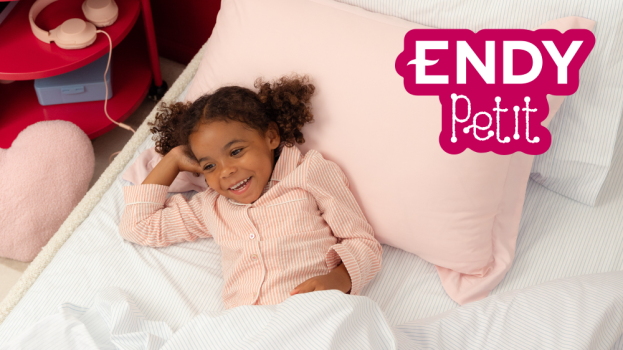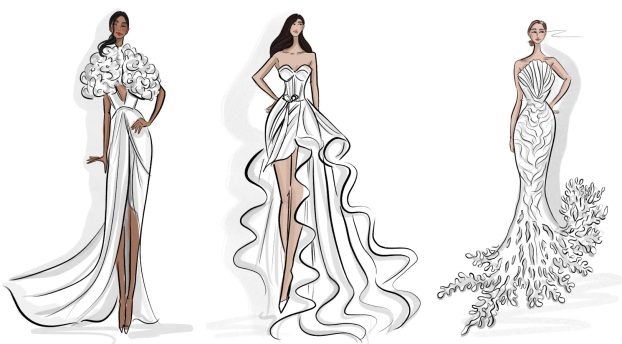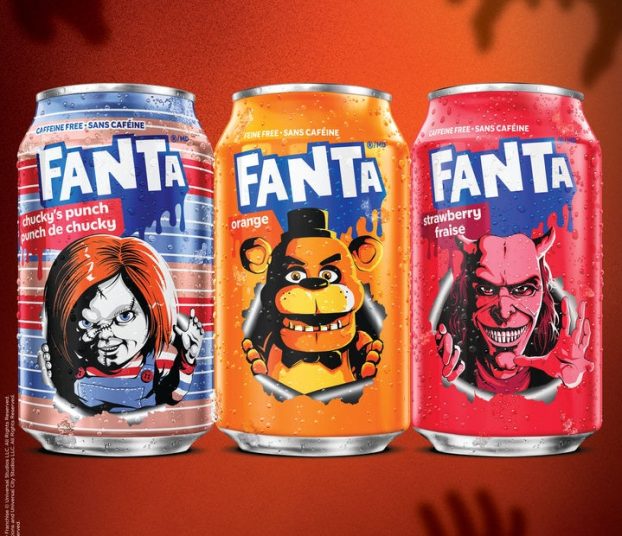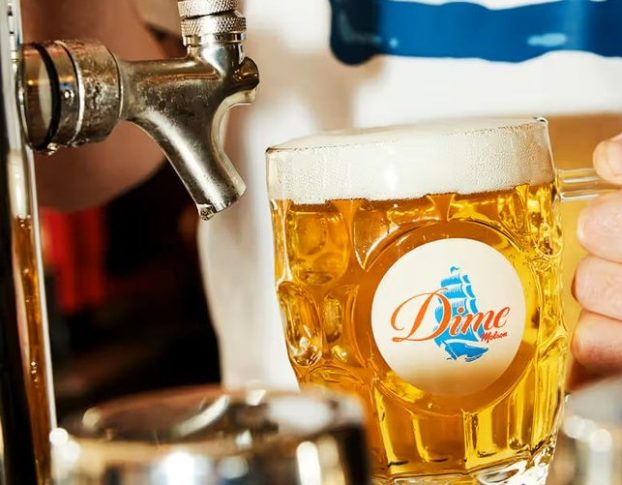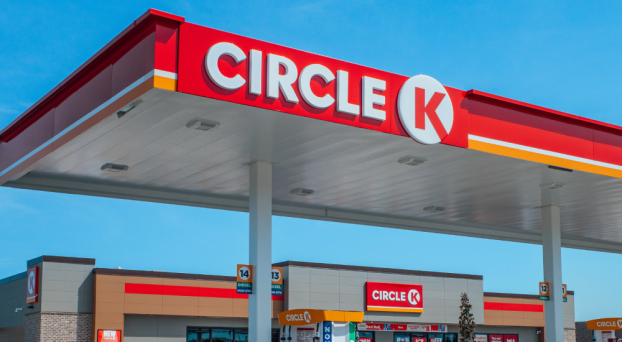
Pepsi’s rebrand towards “unapologetic enjoyment” meant moving from quiet simplicity to bold amplification.
This story was originally published in the 2023 fall issue of strategy magazine.
By Will Novosedlik
Are you a Marie Kondo or an Iris Apfel? If you’re the latter, your style is full of bold, vivid colours, high contrast, multiple patterns, textures and lots of layering. You can see it in a 2016 Architectural Digest photo spread of the designer’s New York apartment. An over-the-top monument to “more is more,” each room a carefully curated collection of curiosities more akin to the storage room at the Château de Versailles than to what most of us would call a living space. Architectural Digest has described Iris Apfel’s style as “fleamarket- slash-desert-bazaar-chic.” It is the apotheosis of maximalism.
If you are a Marie Kondo, Apfel’s material exuberance would probably drive you insane. Kondo is all about disciplined decor. Star of the Netflix hit series Tidying up with Marie Kondo, the Japanese consultant and author relies on a process she calls the KonMari method. The goal is to “end up with a clutter-free home that is better able to bring joy and prosperity to your life.” That makes her the antithesis of Apfel, and the maven of minimalism.
This swing of the pendulum between restraint and romanticism is nothing new. It can be seen throughout art history: renaissance vs. baroque, neoclassical vs. impressionistic, modernist vs. post-modernist. Which way it swings depends on what’s going on in the world at the time.
Minimalism had a good run in the 2000s and early 2010s, a reflection of the rise of technology and the dictates of economic austerity. Think of it as the Apple aesthetic. It got a boost from the pandemic, during which people, stuck at home, suddenly had a lot of time to declutter à la KonMari.
“During the pandemic, visual clutter drove people crazy because they were so stressed out. They had the time and the need for an easy-to-clean environment,” says Nicki Gondell, principal and research lead at NYC-based creative research and consumer trends consultancy firm Trend House. “But then post-pandemic, it was about making up for lost time. It was about bursting out, dressing up, going out, and now, it’s about travelling again. So a lot of Iris Apfel’s layers are definitely coming back in.”
As marketing is generally the last car on the trend train, maximalism has been finding its way from fashion and décor into advertising and design.
One example is the Pepsi rebrand. In an effort to express its mission of “unapologetic enjoyment,” packaging and identity have moved from quiet simplicity to bold amplification. The soft, slender lowercase lettering of the old identity has given way to big, bold caps and is accompanied, in both static and video applications, by a pulsating motif that keeps the party going. It’s a reflection of Pepsi’s embrace of emergent channels like Web3 and the metaverse, and an effort to connect with a younger demographic.
Knorr Canada is another CPG brand that’s embracing the maximalism trend. A recent “Knorr Taste Combos” campaign is a study in captivating visuals that makes the brand impossible to miss. But what’s the thinking behind its new visual language?

Knorr launched its Taste Combos masterbrand campaign across North America in partnership with the never understated Cardi B.
“When we looked at the culture and the dialogue around taste, there was a clear winner – fast food brands. They talk so effortlessly about cravings; they shout about flavour,” says Shagufta Hooda, Canada marketing lead, Knorr, Unilever. “Everything about our vivid use of colour, high contrast, bold typography and delicious food photography was choiceful. Hints of yellow, a more maximalist font and the stylistic choices on food styling and composition were all informed by the tropes of the fast food category.”
There’s a demographic dimension to this. Fast food also happens to appeal strongly to the Gen Z palate. So does TikTok. Unlike the more static, curated world of Instagram, TikTok relies on boldness, weirdness and motion to attract user attention. For brands speaking to a customer who turns to social media to gorge on video, their products need to look good in motion. These days, as marketers know, platforms maketh the brand.
Knorr has even been maximalist in its partnerships. “Earlier in the year, Knorr launched the ‘Taste Combos’ masterbrand campaign across North America, partnering with Cardi B – talk about maximalism,” says Hooda. “Her personality and vibrancy are absolutely larger-than-life.”
The trend has been particularly embraced by the D2C brand set. Proxies, a line of non-alcoholic wines launched by Acid League, have a special challenge: to resemble wine packaging but look like a new category of beverage all at once. As Acid League’s co-founder and creative director, Rae Drake, explains it, Proxies are full of complexity and flavour, so the team set out to build a brand world that would reflect that. Its aesthetic choices, one could say, are inspired by the way postmodern design breaks free from the ways things have been done in the past.

Disruptor brand Acid League uses bold, vivid colours and expressive typography in its packaging, branding and food pairing.
“We knew we needed to go big and bold to set the tone for the category,” says Drake. “Unlike wine or beer, Proxies is its own thing, so there’s some education that needs to happen on shelf. We got creative with the shape of the label and used curves to emphasize each section of text and make the sides as visually interesting as the front to invite people to turn the bottle around. We played with unexpected colour combinations to build out distinct looks for each flavour, which we carry into our photography when styling with food and props.”
What do the designers think? Stephanie Yung, chief design officer at Zulu Alpha Kilo, makes an interesting point about the emergence of maximalism. “When I hear the word maximalism, I always feel compelled to think of it as a negative thing, but I don’t think it is,” she says. “It’s like a layering of experiences. It’s about individualism. And it’s not about one culture. It’s about many. So it rhymes with the notion of inclusivity.”
In much of the articles being written about the rise of maximalism, the most common refrain is “thank goodness blanding is over.” This reflects the fact that brands are often more interested in fitting in than standing out – so entire categories end up succumbing to imitation. While “more is more” is in full swing among both DTC and traditional CPG brands, is it right for every category, demographic or company?
Brands are meant to strive for differentiation. If you are big, bold, bright and colourful in a black and white, clinically minimal environment, you’re going to stand out. But if everyone is big, bold, bright and colourful, it’s more difficult. It’s hard to be you when you are trying to be just like everyone else on the shelf.

